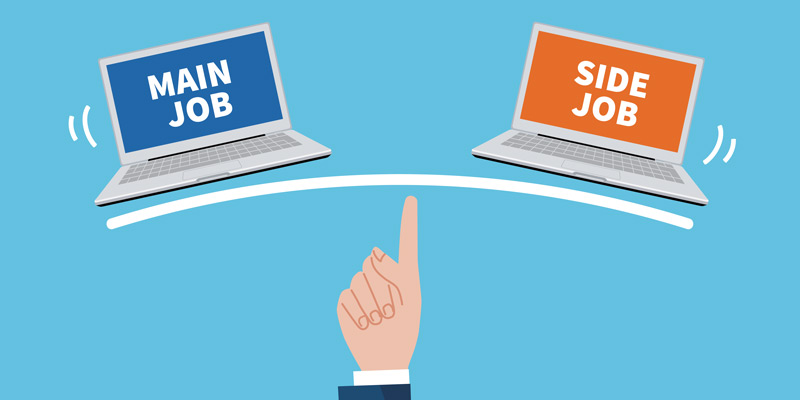Question submission date: January 2023
Full Question: “I have a permanent role but plan on freelancing with a side hustle – how can I do this in the most tax efficient way?”
This might sound like a complicated situation and we’re often asked this question. Luckily, as both roles are treated separately it’s surprisingly straightforward and very common for people to be employed and self-employed at the same time.
Let’s run through the difference between the tax you pay as an employee (in your permanent role) and as a sole trader, what you’ll need to submit and how to do it. And remember, if you are going to be self-employed HMRC need to be notified as you’ll need to file a Tax Return every year to report your trading profits. This can be done by yourself or your accountant.
Firstly, the employee part is easy as nothing changes! You’ll be taxed as normal, in other words, this w
ill be deducted at source under PAYE via your employer.
If you now have other income through your freelancing, this income also needs to be declared to HMRC, and this is done through your personal tax return which must be submitted by 31st January each year (for online submissions). Tax is based on your profit only, not your turnover.
It’s important to remember that Income Tax takes your TOTAL earnings into account, and you’ll only have to pay tax on the amount that exceeds your Personal Allowance, which for the tax year 2022/2023 is set at £12,570. If you already have a permanent role it’s likely you already earn more than that figure.
You’ll pay basic rate tax of 20% on income up to £50,270. Then, for earnings over this you’ll pay higher rate tax of 40%. For a more detailed look at income tax rates take a look at our guide here.
To give you a simple example using 2022/ 2023 rates:
| First, find your total income: | |
|---|---|
| Employment income | £40,000 |
| Sole trade/ self-employment income | £15,000 |
| Total income | £55,000 |
| Secondly, work out your taxable income: | |
| Total income | £55,000 |
| Less personal allowance | £12,570 |
| Total taxable income | £42,430 |
| Taxable income at basic rate 20% | £37,700 |
| Taxable income at higher rate 40% | £4,730 |
| Lastly, calculate the income tax you owe: | |
| Income tax paid at 20% basic rate | £7,540 |
| Income tax paid at 40% higher rate | £1,892 |
| Total income tax owed | £9,432 |
When filling in your tax return, simply state the amount of tax already paid under PAYE (your permanent role which is taxed at source). Then the amount of tax you pay on your sole trader profits will be worked out by HMRC based on the rates discussed above.
Don’t forget to take into account the tax relief available to your sole trader business – these commonly include IT costs, telephone costs, marketing and advertising, professional fees (such as accountants) and travel.
If you’re still unsure as to whether you need to fill in a self-assessment tax return, remember that if you earned more than £1,000 in the last tax year (06 April to 05 April), before taking off anything you can claim in tax relief, then you do. HMRC have a handy tool to check if you need to do a self-assessment.
One last thing to note, this article applies to sole-traders, if you want to set up a Limited Company whilst in employment there are a different set of rules. If your sole trader profits look like they’re going to exceed £30,000 a year, switching to a limited company could save you tax and we’ve written an article about that here.
And finally, if there’s anything you’re unsure of, do talk to your accountant, they’ll set you up on the right path and give you further information about how to operate in the most tax efficient way possible for you and your business.


